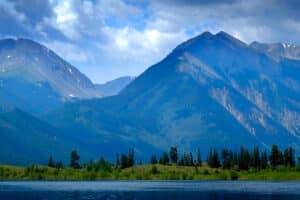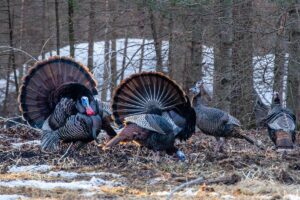So there I was at 23 years old, standing on a former bean field watching the excavator and bull dozer work diligently to not have any wasted motions as they efficiently reshaped the land in front of me. As a young biologist with Ducks Unlimited, I had been trained to take wet fields and make them wetter. A lot wetter. A layman would say “let’s flood it”, but in technical terms we were conducting hydrologic restoration of a hydric soil. At the end of the day my job for those eight years working with the “Big Duck” was to make sensitive soils handle water “better” or “longer”. I was basically building little sponges throughout the Chesapeake Bay Watershed. It was a wonderful experience working throughout the five- state watershed, and one resounding lesson I learned is the 46,000 square mile watershed is REALLY BIG, as is the water quality issues facing the Chesapeake, because they encompass such a broad array of social, economic, and ecological factors.
While I will not attempt to address the gravity of what policies are being considered on the grand scale, let me bring this back down to my little 5 acre bean field, where I was able build stuff and play Mother Nature. As I worked to figure out how water is moving through a potential restoration site I quickly learned to appreciate conservationist Frank Egler’s quote, “Ecosystems are not only more complicated than you think, they are more complicated than you can think.” This recognition of the complexity of natural systems is critical and hydrology is nothing short of magic at times.
Today, I believe this concept requires even more attention as environmentalists are working to make broad generalizations about the way water moves over and through an agricultural field in the Chesapeake. USGS (US Geological Survey) is releasing data stating impacts from water quality improvement practices like all the little sponges I built may not be measured on a macro-watershed level for decades. Over the eight years of restoration work with DU and even the few consulting projects I have partnered on recently, I have witnessed both the incredibly fast resiliency of natural systems like a restored wetland, but also the slow march of “form and function” when a wetland starts to go through specific ecological changes that make it the “effective sponge” we have designed. In fact, there is evidence from studying restored wetlands when a scientist may not even be able to determine if the system is performing as the nutrient sink it is intended to be. Over the years, I easily completed over 100 wetland restoration projects in three states where I delivered on the ground habitat. My work was a drop in the bucket and theses 100 sponges would barely soak up the last few drops in the 46,000 square mile watershed. While not to belittle the work we did at DU or the important work many other biologists and agencies are working towards today, it is important to know it is the scalable impact of all of these efforts working in concert together across the landscape. During my tenure our programs worked to restore and protect over 30,000 acres in the Chesapeake.
These numbers continue to grow and exceed 70,000 acres today, and the farmers that have voluntarily enrolled these sensitive lands in forestlands, grasslands, and wetlands deserve immense credit for taking this forward position and working to make their farms more productive and the water leaving their farms cleaner for the Bay.
It was these experiences that prepared me for my career in land brokerage; while working with farmers to go through the myriad of options with the conservation measures of the Farm Bill and helping them to garner funding for agricultural and resource conservation easements, I learned how to help landowners with management and economics of the farm.
From all of these experiences I clearly recognize the vast complexity of ecological restoration. Like many others in the agricultural community, I have concerns that future regulatory policies relating to the Chesapeake Bay may fail to take these factors into account, and the balance of political power in our State may believe its assumptions too strongly without a complete understanding of the implications of their decisions to our state economy and livelihood of farm families in Maryland.
There is a lot more riding on these policy decisions in the coming months and years than I had riding on that bean field becoming a wetland after I flooded it. However, I can still remember being a little nervous about every project “holding water”. I hope every decision maker in this policy making process takes the same care to be sure their arguments “hold water” and the agricultural policy of our state does not drain it of the important economic impact and social fabric farming plays in Maryland.
This content may not be used or reproduced in any manner whatsoever, in part or in whole, without written permission of LANDTHINK. Use of this content without permission is a violation of federal copyright law. The articles, posts, comments, opinions and information provided by LANDTHINK are for informational and research purposes only and DOES NOT substitute or coincide with the advice of an attorney, accountant, real estate broker or any other licensed real estate professional. LANDTHINK strongly advises visitors and readers to seek their own professional guidance and advice related to buying, investing in or selling real estate.









Add Comment